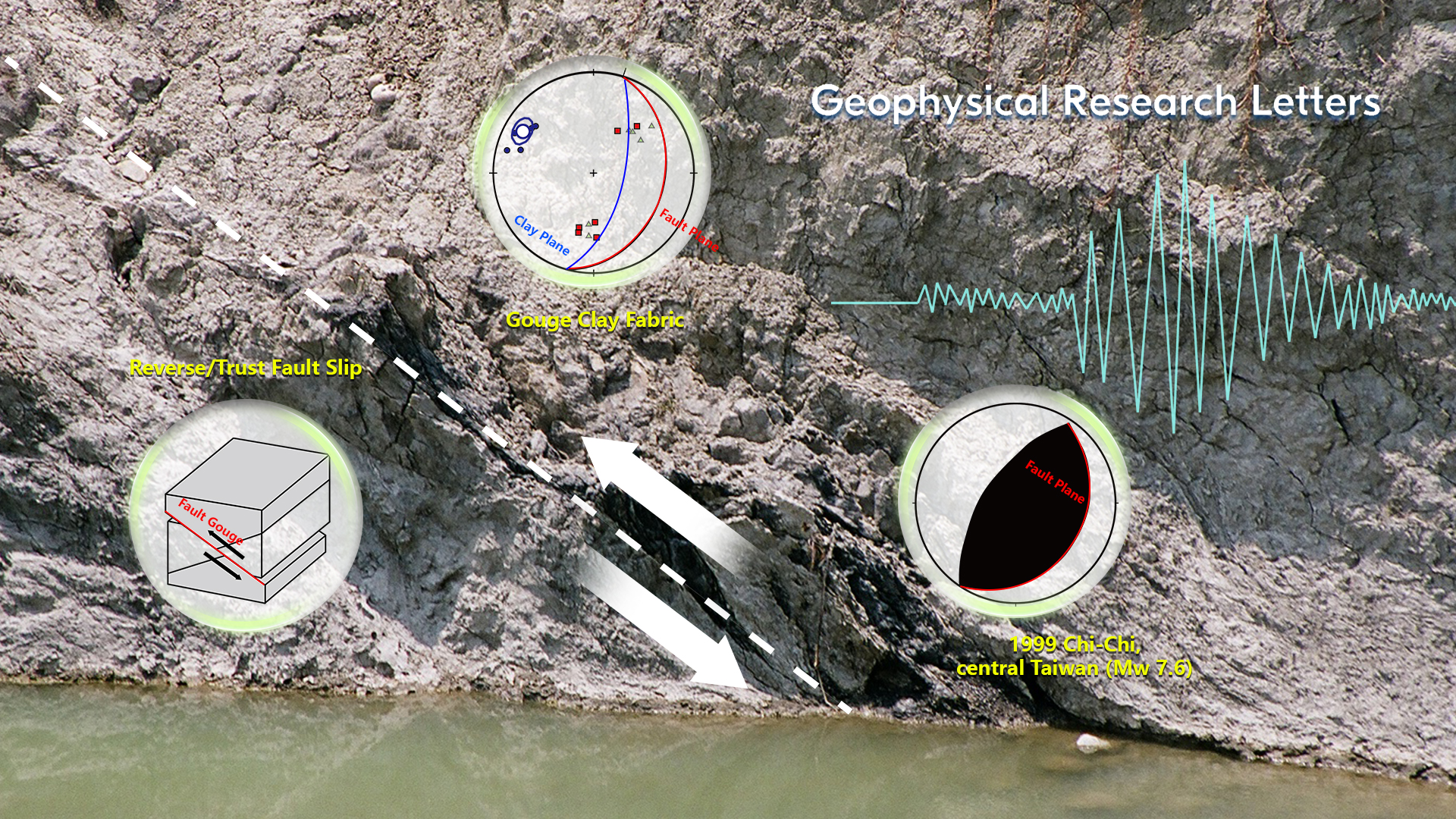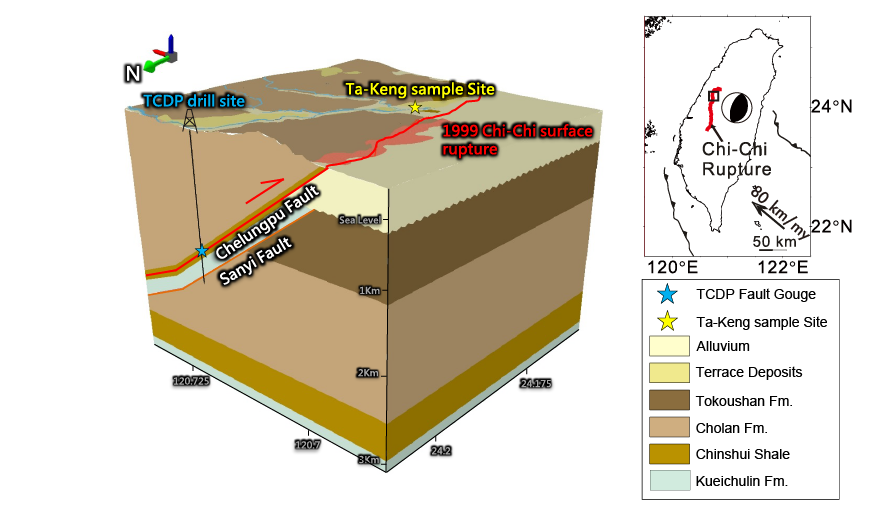New Methods to elucidate earthquake properties from fault gouges
Nov 11, 2020
Fault gouges often provide important and valuable information that can help to understand the fault mechanisms and to assess the seismic hazard. However, it is generally a complex, time consuming and expensive procedure to get access to the shape preferred orientation of micrometric minerals.
Assistant Professor Yu-Min Chou (Department of Ocean Science and Engineering) and his research team provide a new tool to elucidate earthquake properties from fault gouges. Their paper, entitled “The Magnetic Fabric of Gouge Mimics the Co-seismic Focal Mechanism of the Chi-Chi Earthquake (1999, Mw 7.6),” was published in the high-impact academic journal, Geophysical Research Letters (IF = 4.58).

This study shows that the anisotropy of magnetic susceptibility, which is a fast and non-destructive technique, can be a proxy of the structural fabric of historical gouges. The magnetic fabric of gouge mimics the focal mechanism solutions of the historical earthquakes.
This technique has already been previously applied to gouge zones, but this is the first time that it is used in the gouge from one of the best-documented historical large seismic events: the 1999 Chi-Chi earthquake (Mw 7.6) along the Chelungpu fault (Taiwan Province). Samples within and around this fault were obtained from fresh surface outcrop and 1 km deep borehole (Hole B, Taiwan Chelungpu-fault Drilling Project). The 1 km deep gouge hosts the 3-mm-thick principal slip zone of the Chi-Chi earthquake.

Figure 1 – The Geological map of the Takeng sampling locality and the TCDP drilling site in central Taiwan. The surface rupture of 1999 Chi-Chi earthquake is ~85 km in length.

Figure 2 – (a) Magnetic fabric of the Chi-Chi slip fault gouge. (b) Reconstructed focal mechanism solution by gouge clay fabric. (c) The Global Centroid-Moment-Tensor (CMT) focal mechanism solution of the 1999 Chi-Chi earthquake by seismic wave data. (d) The Chelungpu fault is a reverse/thrust fault.
The results show that the bulk fabric of fault gouge is anisotropic, reflecting the grain orientation of billions of clays and magnetic particles. The reconstructed focal mechanism based on the magnetic fabric geometry matches closely the focal mechanism solutions for the Chi-Chi earthquake estimated by seismic wave data from several previous studies. This finding provides a new perspective for the wide magnetic evaluation of fault gouges from modern and ancient earthquakes.
The first/corresponding author of this paper is Assistant Professor Yu-Min Chou. Professor Charles Aubourg (Pau University, France) and Associate Professor En-Chao Yeh (National Taiwan Normal University) are co-corresponding authors. This work is supported by the start-up fund from the Southern University of Science and Technology.
Paper link: https://doi.org/10.1029/2020GL090111
Latest News
Related News












